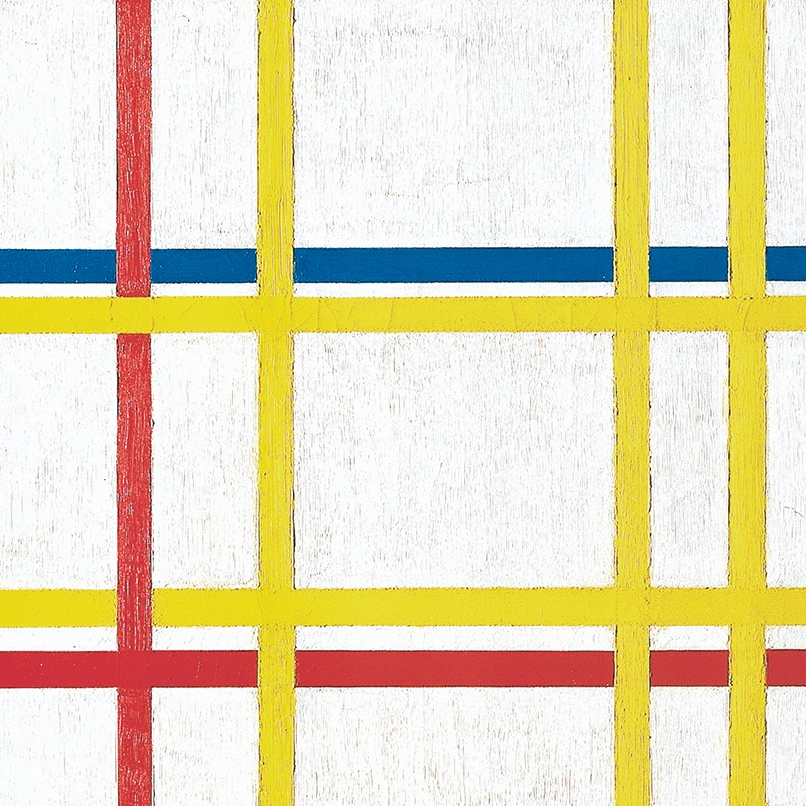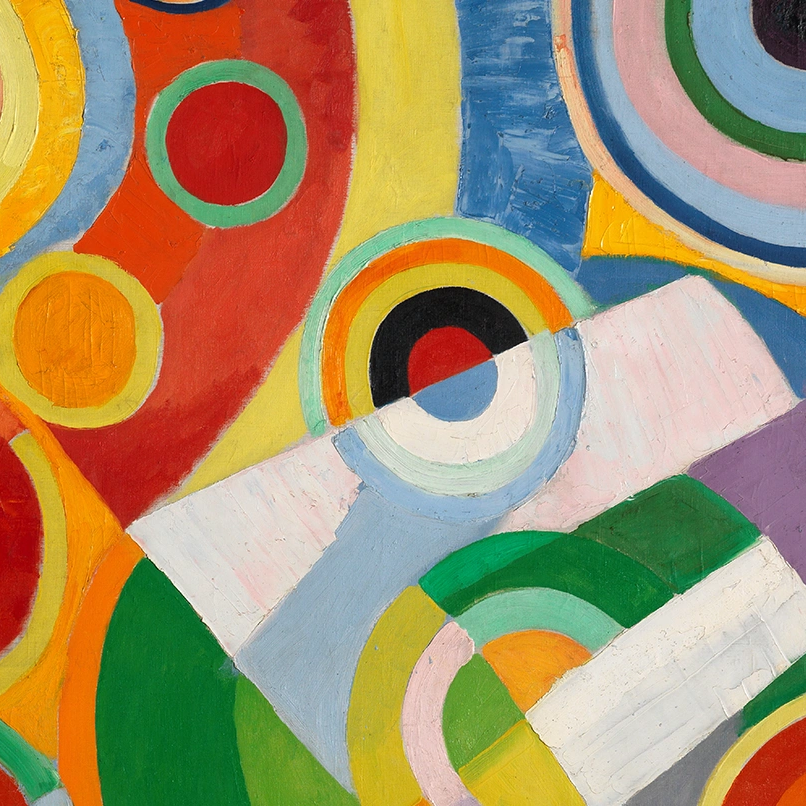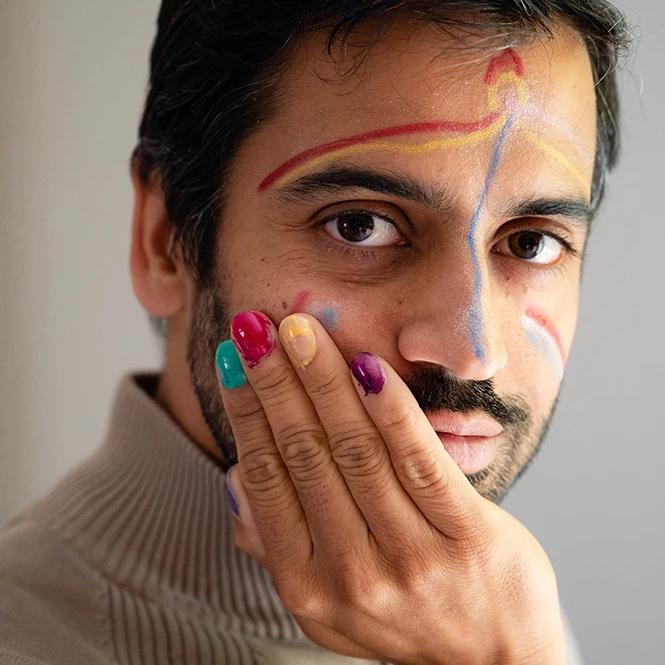A pioneer of abstraction and a master of color and form, Kandinsky's body of work is astonishing today. Starting with his canvas Bleu de Ciel, the Centre Pompidou and Namaki invite you to discover abstract art in a different way. Are you ready to dive in with us and discover a tiny population?
Kandinsky, magician of colors and shapes
A nomadic artist
Vassily Kandinsky was born in Moscow in 1866 into a wealthy, cultured family. He learned German from his grandmother, and took piano, cello and drawing lessons. Vassily spent his childhood and adolescence in Odessa (then in Russia, now in Ukraine). At the age of nineteen, he returned to Moscow to study law, economics and statistics. In Russia, Germany, Holland, Italy, Tunisia, Switzerland and France, Kandinsky was a nomad. Alternating between travels and returns to Moscow, he moved to the rhythm of missions, exhibitions and outbreaks of conflict. In 1927, he settled in Paris with his wife. He obtained French nationality in 1939, just before the outbreak of the Second World War.
💡 To easily explain Kandinsky's globe-trotting side to children, you can locate the main countries on a map: Russia, Ukraine, Germany, Italy, the USA, Tunisia, Holland, Switzerland and France!
Create without constraint
At the age of thirty, Kandinsky decided on his future: he would become a painter and study painting in Munich. He began painting in 1895. In 1910, he created his first abstract canvases, abandoning the idea of reproducing nature and objects. Until his death in 1944, he never ceased to advocate a form of painting that freed itself from the obligation to resemble. Rather than simply showing, Kandinsky sought to create a feeling for nature. His artistic choices and his works made him an artist and a man of the 20th century.
Bleu de Ciel: a ballet of strange creatures
The abstract language of small hybrid beings
Mollusks or birds? Snake or mermaid? Perhaps one or the other, depending on your imagination and feelings. With abstract forms that sometimes seem to swim, sometimes to fly, Kandinsky uses abstraction to express emotions without using recognizable shapes. Playing with color and the effects of movement, and abandoning geometric forms, the canvas welcomes life like a microscope slide. It reveals an infinitely small world, in the throes of creation and mutation.
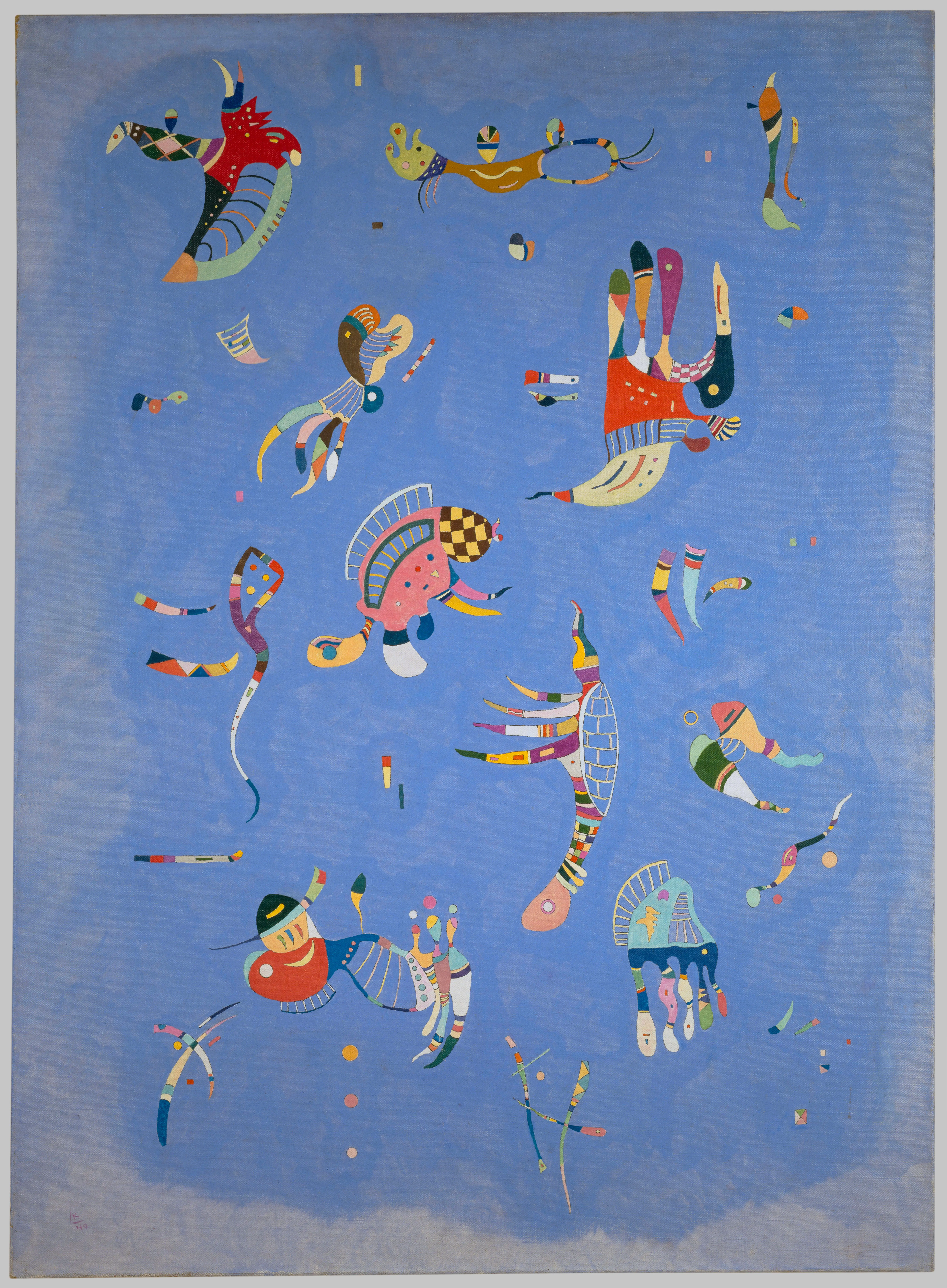
Vassily Kandinsky (1866-1944)
Bleu de Ciel, 1940
Oil on Canvas, 100 x 73 cm
The secrets of blue
While his previous creations featured multiple colors, Kandinsky chose a monochrome blue background for these curious animoncules. Like Miro and Klein after him, Kandinsky explores the symbolism of this primary color. Synonymous with wisdom and serenity, but also soothing and stable, blue is associated with reverie. Bleu de Ciel takes us on a journey to meet new poetic and imaginary creatures.
💡 Questions for your children How many different blue names can you name?
(For example: midnight blue, turquoise blue, lavender blue...).
Kids' corner: inspiration for fun
Step 1
Watch carefully: search and find
All the Namaki's children tattoos are present on Kandinsky's canvas. Can you find them? Don't forget they've been printed upside down.
Step 2
Become both artist and canvas
With the Namaki's children tattoosyou can turn your body into a huge canvas for painting. If you want to complete your work, use the face painting pencils to color a blue background or create other little creatures.
Step 3
Imagine: from words to movement
And if you were one of these little creatures, what would you call yourself? And how would you get around? Let your imagination run wild. You can dress all in blue, put scarves on your wrists and start dancing as if you too were floating in the Bleu de Ciel.
Step 4
Change your perspective and create new elements
If you've printed your sheet, turn it over (or turn over your tablet or smartphone). What do you notice? What do you see now where the legs used to be? What happened to the horns? Dive into this world and draw other creatures.
Going further with the "L'art en jeu" collection
Congratulations, you've just explored the corridors of Kandinsky's imagination! To complete your reading, you can :
- Browse the book dedicated to the work in the "L'art en Jeu" collection, published by Centre Pompidou's Edition.
- Discover Bleu de Ciel and many other works by the artist at the Centre Pompidou.
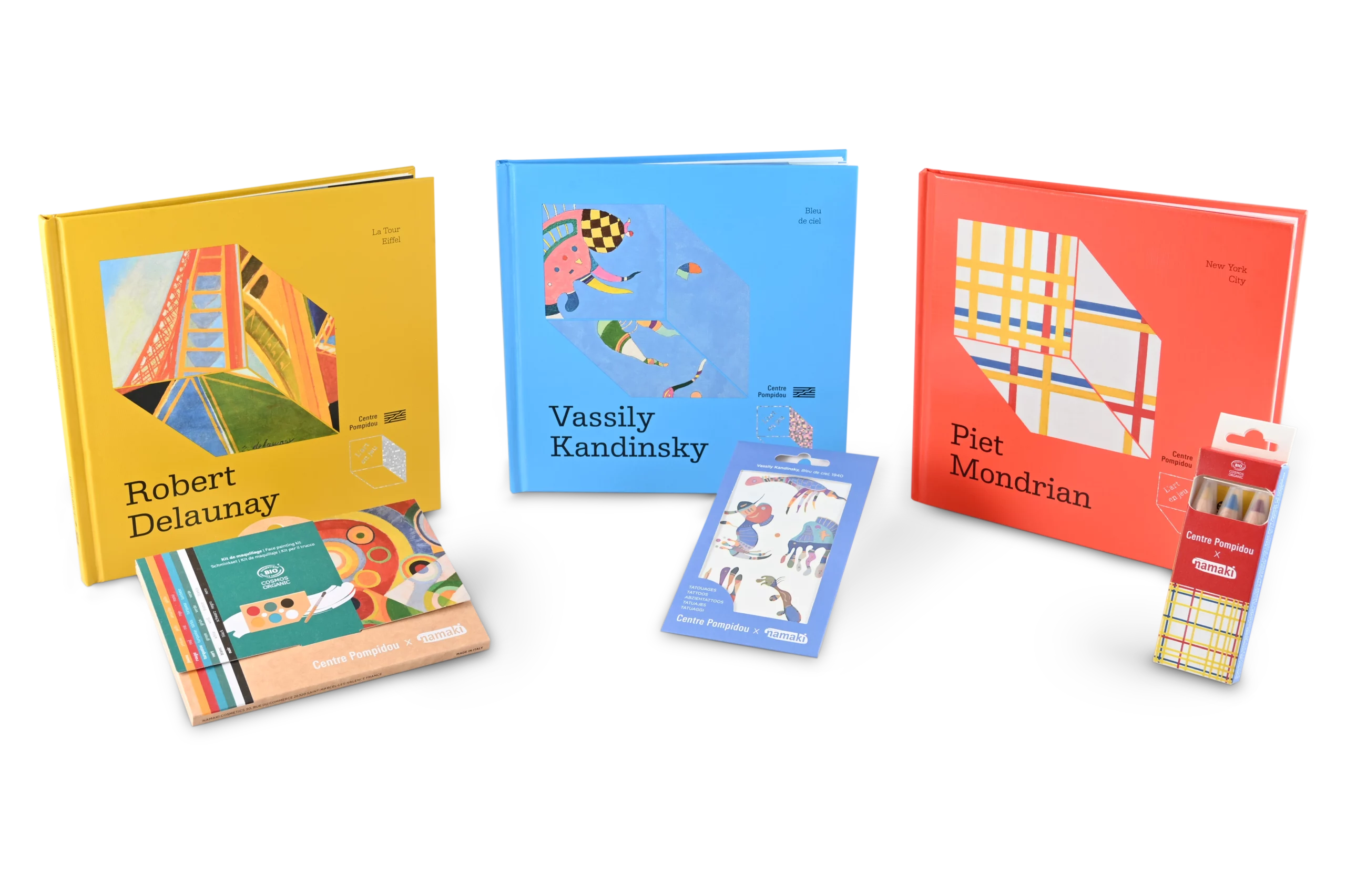
Partager cet article


